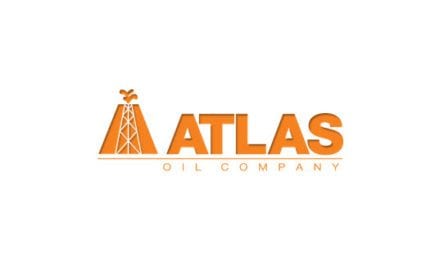Rig Count Shows Signs of Life
- Oil rig count has greatest weekly gain of 2016
- Crude oil price gains seen as tepid
- Thirteen per cent crude oil supply surplus caps prices
- Natural gas injection below expectation; prices rally
Table covers crude oil and principal products. Other products, including residual fuel oil and “other oils” are not shown, and changes in the stocks of these products are reflected in “Total Petroleum Products.” Statistics Source: Energy Information Administration “Weekly Petroleum Status Report” available at www.eia.doe.gov
The Matrix
The global oil market balance debate continues unabated. Bulls are emphasizing strong gasoline demand and continuing interference with crude oil output to justify price advancing. Bears point to the resurgence of working oil rigs in the United States and prices apparently high enough to encourage a return to production of supply now shut-in.
One indication of renewed exploration interest is the latest Baker-Hughes oil rig count. The report for the week ending June 3 reported 325 domestic oil rigs in use. This was a weekly gain of nine rigs, the biggest weekly gain in 2016. More rigs, of course, mean more potential production tending to cap prices at the fifty-dollar level.
The loss, however temporary, of crude oil supply from Canada and overseas, has contributed markedly to currently higher prices. One analyst suggests that without these losses prices might be closer to $35. Moreover, in this view, price increases attributable to reduced supply are only about half of the 2011 gain recorded when Libya went off the rails.
Ultimately, of course, it’s the amount of oil available to meet demand that will govern where prices will go. This has proven to be a stubborn barrier to further price advances. The Energy Information Administration, in its most recent report, said that U.S. weekly commercial crude oil supplies fell three million barrels to 532 million barrels. Nonetheless, crude oil stocks are more than 13 per cent higher than last year. Total domestic oil stocks, including products, exceed last year’s levels by 9.3 per cent. Only residual fuel oil and propane lag last year’s levels, down 2.8 and 1.9 per cent respectively.
This is at a time when demand for gasoline is more than four per cent greater than last year at this time. ULSD, by contrast, lags last year’s demand by 7.4 per cent, reflecting, perhaps the warmer El Nino just ending. Aggregate demand leads last year-to-date nearly two per cent.
Supply/Demand Balances
Supply/demand data in the United States for the week ending June 3, 2016 were released by the Energy Information Administration.
Total commercial stocks of petroleum increased 3.2 million net barrels during the week ending June 3rd, 2016.
Builds were reported in stocks of gasoline, K-jet fuel, distillates, propane, and other oils. Draws were reported in stocks of fuel ethanol and residual fuel oil.
Crude oil supplies in the United States decreased to 532.5 million barrels, a draw of 3.2 million barrels.
Crude oil supplies decreased in three of the five of the PAD Districts. PAD District 2 (Midwest) crude oil stocks declined 1.7 million barrels, PADD 3 (Gulf Coast) stocks fell 3.8, and PADD 4 (Rockies) decreased 0.3 million barrels. PAD District 1 (East Coast) crude oil stocks experienced a build of 0.2 million barrels, and PADD 5 (West Coast) stocks increased 2.4 million barrels.
Cushing, Oklahoma inventories decreased 1.3 million barrels to 65.6 million barrels.
Domestic crude oil production increased 10,000 barrels daily to 8.745 million barrels per day.
Crude oil imports averaged 7.705 million barrels per day, a daily decrease of 134,000 barrels.
Refineries used 90.9 per cent of capacity, an increase of 1.1 percentage points from the previous report week.
Crude oil inputs to refineries increased 211,000 barrels daily; there were 16.417 million barrels per day of crude oil run to facilities. Gross inputs, which include blending stocks, increased 211,000 barrels to 16.651 million barrels daily.
Total petroleum product inventories saw an increase of 6.4 million barrels from the previous report week.
Gasoline stocks increased 1.0 million barrels; total stocks are 239.6 million barrels.
Demand for gasoline decreased 148,000 barrels per day to 9.568 million barrels daily.
Total product demand decreased 576,000 barrels daily to 19.779 million barrels per day.
Distillate fuel oil supply increased 1.8 million barrels; total stocks are 151.4 million barrels. National distillate demand was reported at 3.576 million barrels per day during the report week. This was a weekly decrease of 251,000 barrels daily.
Propane stocks increased 1.9 million barrels to 77.3 million barrels. Current demand is estimated at 930,000 barrels per day, a decrease of 29,000 barrels daily from the previous report week.
Natural Gas
According to the Energy Information Administration:
Working gas in the Lower 48 states posted its eighth straight week of net injections. Net injections into storage totaled 65 Bcf during the storage report week, compared with the five-year (2011-15) average of 96 Bcf and last year’s net injection of 117 Bcf during the same week. As a result, the surplus in storage compared with the five-year average declined from the previous week to 722 Bcf, and the surplus compared with year-ago levels decreased to 660 Bcf. The year-over-year storage surplus fell for the ninth consecutive week.
A long period of indecision resolved in natural gas futures pricing. Futures prices traded around $2.00 from early April. As May ended, prices moved dramatically higher, reaching $2.29. June has experienced continued bullish activity, moving over $2.60.
Elliott Wave analysis recognized the rally, counting the advance as a possible third wave completed. A correction down to $2.25 could follow next. A fifth wave moving higher has $3.16 as its objective.
Futures trading involves significant risk and is not suitable for everyone. Transactions in securities futures, commodity and index futures and options on future markets carry a high degree of risk. The amount of initial margin is small relative to the value of the futures contract, meaning that transactions are heavily “leveraged”. A relatively small market movement will have a proportionately larger impact on the funds you have deposited or will have to deposit: this may work against you as well as for you. You may sustain a total loss of initial margin funds and any additional funds deposited with the clearing firm to maintain your position. If the market moves against your position or margin levels are increased, you may be called upon to pay substantial additional funds on short notice to maintain your position. If you fail to comply with a request for additional funds within the time prescribed, your position may be liquidated at a loss and you will be liable for any resulting deficit. Past performance may not be indicative of future results. This is not an offer to invest in any investment program.
Powerhouse is a registered affiliate of Coquest, Inc.
Was this helpful? We’d like your feedback.
Please respond to [email protected]
or call: 202 333-5380
Copyright © 2016 Powerhouse, All rights reserved.













